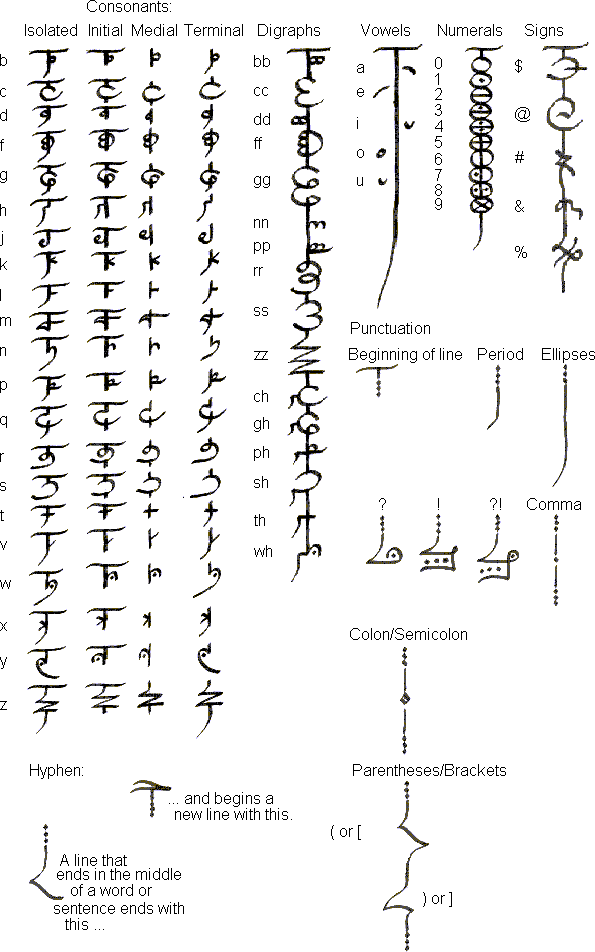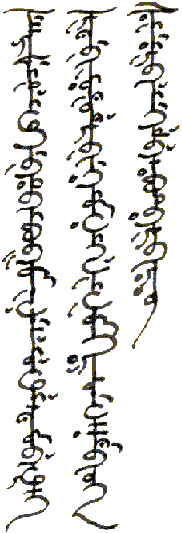The Vine alphabet was invented by Marshall Wildey in 2002 during a boring day at work. He was inspired by Mongolian in its vertical, continuous writing. Most of the consonants somewhat resemble the ones in the Latin alphabet. The name of the alphabet comes from its style which resembles a hanging vine.


All human beings are born free and equal in dignity and rights.
They are endowed with reason and conscience and should act towards
one another in a spirit of brotherhood.
(Article 1 of the Universal Declaration of Human Rights)
The information and images on this page
were produced by Marshall Wildey
(marswild[at]gmail[dot]com).
If you have any questions
about the Vine alphabet,
please write to Marshall.
Constructed scripts for: Ainu | Arabic | Chinese languages | Dutch | English | Hawaiian | Hungarian | Japanese | Korean | Lingala | Malay & Indonesian | Persian | Tagalog / Filipino | Russian | Sanskrit | Spanish | Taino | Turkish | Vietnamese | Welsh | Other natural languages | Colour-based scripts | Tactile scripts | Phonetic/universal scripts | Constructed scripts for constructed languages | Adaptations of existing alphabets | Fictional alphabets | Magical alphabets | A-Z index | How to submit a constructed script
[top]
You can support this site by Buying Me A Coffee, and if you like what you see on this page, you can use the buttons below to share it with people you know.

If you like this site and find it useful, you can support it by making a donation via PayPal or Patreon, or by contributing in other ways. Omniglot is how I make my living.
Note: all links on this site to Amazon.com, Amazon.co.uk
and Amazon.fr
are affiliate links. This means I earn a commission if you click on any of them and buy something. So by clicking on these links you can help to support this site.
[top]